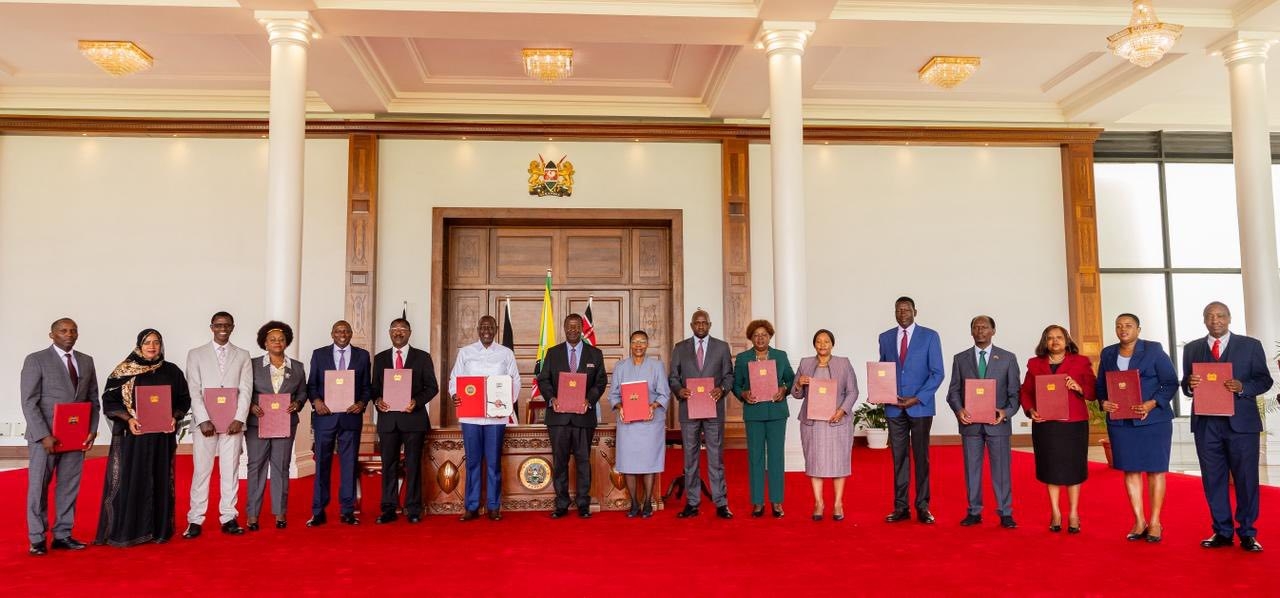Farmers have been encouraged to grow sunflowers and soya beans to meet the rising demand from feed millers.
Livestock Principal Secretary Jonathan Mueke said the shortage of raw materials is a major obstacle to the growth of the animal feed sector.
Mueke said there is a need for concerted efforts to boost local production to ensure a steady supply of raw materials for millers.
He said some farmers in Western, Nyanza and Eastern have started to embrace sunflower and soya bean farming.
“In Mt Kenya and Western they are growing sunflowers while others in Migori county are growing soybeans. If the local production of these raw materials is sustainable, we may start seeing a drop in the cost of feed in a few years' time,” he said.
Mueke said more farmers in Western, Coast and Eastern have adopted Bt cotton.
Thanks to this, feed millers are getting 50 per cent of the cotton seed cake from the country.
“We have a ready market, and this should motivate farmers to produce more of these raw materials,” he said.
Association of Kenya Feed Manufacturers chairman Joseph Karuri also attributed the high cost of feed to inadequate raw materials.
He said Kenya is a net importer of animal feed raw materials.
“We import about 60 per cent of our raw materials from Tanzania, Uganda and across the globe. This is the big challenge that has made our cost of production high hence the complaints from the farmers," he said.
Karuri said 70 per cent of the cost of production for poultry and pigs is on feed, adding that any effect on the price of raw materials impacts heavily on the price of animal feed.
Some of the major raw materials for making animal feed include sunflower cake, cotton seed cake, soybean meal (which are the three main sources of protein) and maize.
He said the cost of feeds has slightly gone down due to the good rains that made fodder and raw materials such as maize available.
“Last year, the country came out of one of the worst droughts in 40 years and this saw the prices of commodities such as maize skyrocket to a record high. Maize prices reached an all-time high. Because of the good rains of last year, we have seen a lot of maize come from farmers this year,” Karuri said.
Maize prices have fallen from Sh6,000 per 90kg bag to Sh3,000.
“This has influenced the drop in the price of feeds by about 20 to 30 per cent because maize is one of our major raw materials."
A 70 kg bag of dairy meal sold at Sh3,000 last year, but today it has reduced to Sh2,700.
Karuri said about 30 feed millers closed shop due to the shortage of raw materials.
“There were not enough raw materials and some millers, especially the small-scale millers, closed. They are the most vulnerable when it comes to economic or supply shocks. However, due to the good rains, things are stabilising and we are seeing other millers coming up,” he said.
The association has 350 feed millers who are spread into three categories of SMEs, middle level and large-scale millers.
There are only five large-scale feed millers, 200 millers in the middle level and t145 small-scale millers.
“Sixty percent of the millers are members of the association. The volume of feed that is produced by the members is about 70 per cent of the total feed that is produced in the country,” Karuri said.












